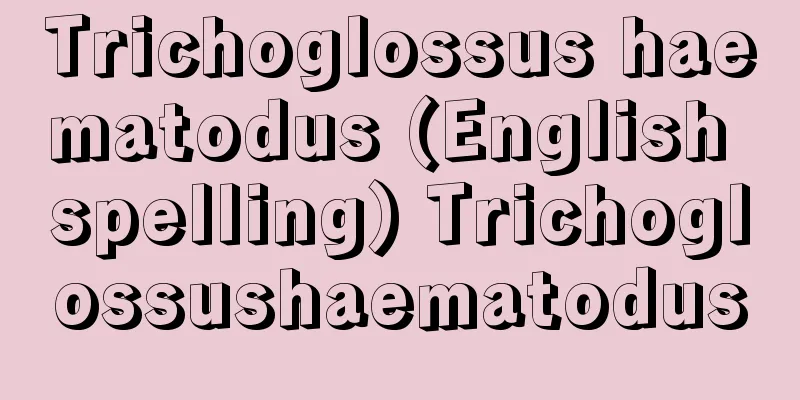Neptune whelk

|
This snail belongs to the family Bucconidae of the class Gastropoda of the phylum Mollusca. It lives on the muddy bottom at depths of 50 to 300 meters in the Sea of Japan, the Sanriku coast, and the coast of Hokkaido, and is caught using bottom trawls and bai-kago (a type of cage net, also called tsubu-kago). Its shell is about 16 cm high and 7.5 cm in diameter. The surface of the shell is light brown, and the shoulders are not angular. There are numerous spiral ribs on the surface of the shell, and growth veins are obvious. The inside of the shell opening is yellowish brown, and the outer lip curves slightly outward. The operculum is leaf-shaped and leathery, and the nucleus is at the bottom. It is edible, but the poison contained in the salivary gland can cause intoxication, so this part is removed. It can be eaten raw or processed by heating. [Takashi Okutani] Source: Shogakukan Encyclopedia Nipponica About Encyclopedia Nipponica Information | Legend |
|
軟体動物門腹足綱エゾバイ科の巻き貝。日本海、三陸海岸、北海道沿岸の水深50~300メートルの泥底にすみ、底引網やバイ籠(かご)(籠網の一種、ツブ籠ともいう)で漁獲される。殻高16センチメートル、殻径7.5センチメートルぐらいである。殻表は淡褐色で、肩は角張ることはない。殻表には多数の螺状肋(らじょうろく)があり、成長脈は明らかである。殻口内は黄褐色で、外唇はわずかに外側に反る。蓋(ふた)は木の葉形で革質、核は下端にある。食用にされているが、唾液腺(だえきせん)に含まれる毒のため酔うことがあるので、この部分は除く。生食にも加熱加工用にもなる。 [奥谷喬司] 出典 小学館 日本大百科全書(ニッポニカ)日本大百科全書(ニッポニカ)について 情報 | 凡例 |
Recommend
Sanwa [town] - Sanwa
A former town in Jinseki County, eastern Hiroshima...
Living things -
It refers to something that has attributes that d...
Luis Vélez de Guevara
1579‐1644 Spanish playwright and novelist. After s...
Axe - Axe
A county-level city in the western part of the Xi...
Emperor Gohanazono
Year of death: Bunmei 2.12.27 (1471.1.18) Year of ...
Sawtooth Aphid
[ Oryzaephilus surinamensis ]. Also known as the s...
Reid, FF (English spelling) ReidFF
…The other is the 1906 San Francisco earthquake, ...
Wild bergamot (English spelling)
…In Japan, it has been experimentally cultivated ...
Right to occupy fishing grounds - fishing ground occupancy right
...In other words, only the hon-hyakusho class ha...
Mochizuki
[1] [Noun] ① The moon on the fifteenth night of th...
Sichuan Magistrate - Shisenbugyo
An office in the Edo Shogunate. A position under t...
hymnos
…Christian chants, originating from the Greek hym...
Taboo - Meaning of taboo
〘Noun〙① A person involved in a Shinto ritual or Bu...
Mansaku Okamoto
...It is a place where a large number of people a...
Heaven's cave - Amenoiwayado
In Japanese mythology, Amaterasu Omikami was angry...









